It can be safely stated that the main thing in creating a homely favorable climate is to maintain comfort in the living room and, of course, the stored heat. Unfortunately, in many apartments it gets cool with the onset of cold weather, first of all it concerns prefabricated houses. As a rule, the culprit is not the indoor heating system, but poor thermal insulation due to worn walls in prefabricated houses. How to make heat in the apartment of a panel house, how to insulate the wall from the inside, how to use the instructions, where to see photos and videos of the masters will learn further.
Content
Wall insulation in a panel house is the key to creating heat in the apartment
Problems of this kind must be fought. First you need to carefully examine the room and find out where the source of cold is. Basically, such sources include windows, cracks in the front doors and ducts for them. However, all this relates to minor issues. The walls of the apartment are a global problem, and it is because of them that it becomes much colder in the room.
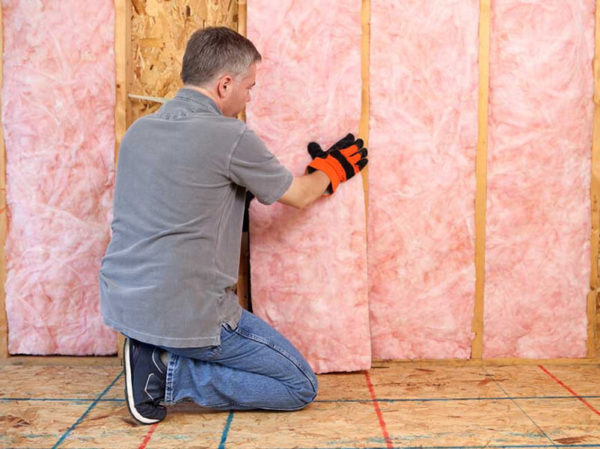
Some common causes of house coolness:
- First of all, the owners of apartments located on the ground floor suffer from mold.
- And also the most popular phenomenon for them is dampness.
Flats that are located along the edges of the house are also subject to freezing, it is these apartments that are most in contact with the street, which carries a greater freezing.
Read more: How to insulate the floor in a wooden house from the bottom, without opening the floor
If the house consists of panels, then first of all the main cause of heat loss is seams and joints.
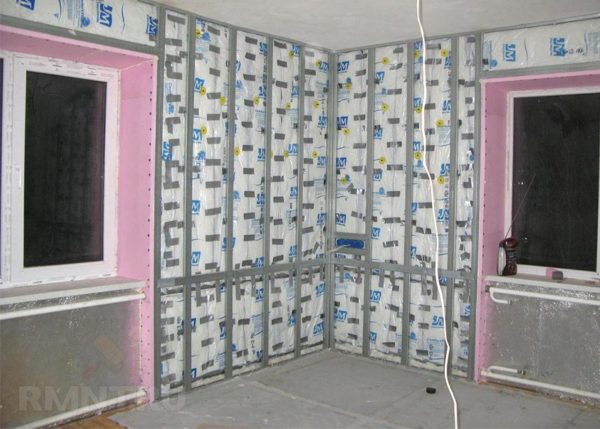
If black mold appears, then this indicates that the thermal insulation between the panel seams is very low. The appearance of mold also causes an unpleasant smell of mold.
Many are interested in how to insulate the wall in the apartment from the inside, if you live in a panel house. There are many instructions, photos, videos from experienced craftsmen.
What are the ways to warm the walls?
When the owner of the apartment was faced with the issue of mold and dampness, then the task immediately arises - insulation of the apartment from the inside.
Wizards recommend two ways to solve this problem, namely:
- insulation of the walls of the panel house from the inside;
- insulation of the walls of a panel house outside.
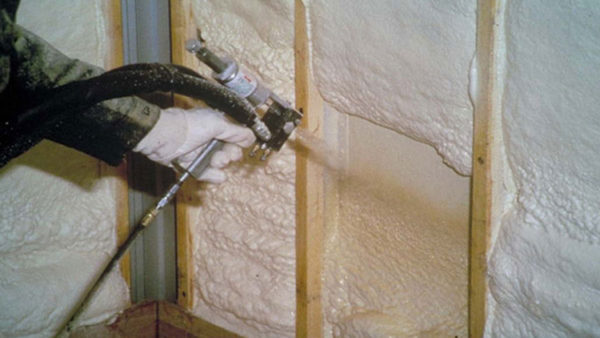
The most correct option in the issue of insulation of the apartment is the additional processing of the walls outside the house. However, on the way to such a process one may encounter a number of different problems. It is not possible to make some apartments warmer in this way, so you should not even think about it.
There are several drawbacks to wall insulation from the outside. One of these negative points is that it is necessary to make a preliminary repair of the walls. This entails quite a lot of costs, which will consist of the purchase of the necessary materials, as well as the payment of labor to the high-altitude workers. The amounts are very large and not always the homeowners are ready to part with them.

Styrofoam is ideal for wall insulation from the inside of an apartment in a panel house.
If the apartment has a smell of dampness and mold, then the landlord will have to deal with such problems alone. In order not to fall into the winter at all in your own apartment, the repair must be taken seriously and done in a timely manner.
Read more: How to properly insulate the ceiling under the cold roof from the attic
Due to the fact that apartments belong to urban buildings, it is not always allowed to insulate walls from the outside, as this entails a change in the architectural appearance of the building.
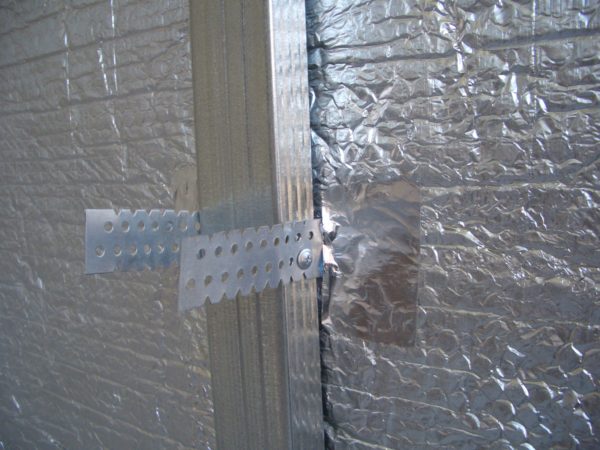
Therefore, due to many shortcomings, the owners of apartments in panel houses are looking for a solution to the problem of wall insulation inside, using various instructions, video and photo materials.
Materials for insulation inside
To warm the walls from the inside of the room, many different types of materials are used. The most popular are mineral wool, polyurethane foam, polystyrene foam. Often, insulation is done with foam.

The advantages of using polystyrene for insulation of the apartment from the inside
Such material has a lot of positive aspects. You can list the main ones, namely:
- affordable price;
- non toxic
- simple technology for finishing work;
- the ability to carry out repairs on their own;
- good thermal insulation properties of the foam.
What polystyrene is suitable for wall insulation
When choosing a foam, it is necessary to take into account its thickness and density. It is recommended to work with dense material.
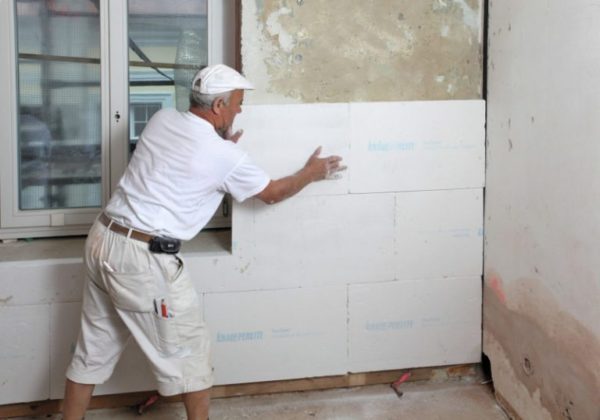
A very important criterion will be:
- influence of weather conditions;
- how much warmer it will be in the apartment, after warming;
- required foam thickness;
- of which the wall is made of brick or slabs.
According to the requirements of DSTU B.V. 2.7-8-94 TU for polystyrene foam boards, foam can be divided into four groups PSB-S35, PSB-S15, PSB-S50 and PSB-s 35.
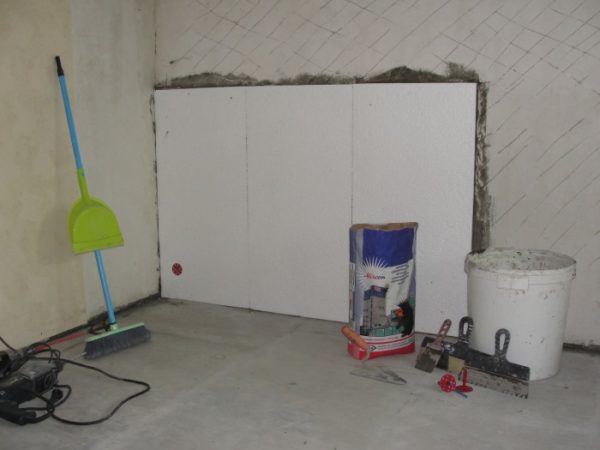
According to the indicated letters, it is made by the non-pressed method. Its properties have remained unchanged for 40 years. The numbers at the end of the marking do not indicate the actual density of the material. When calculating, it is necessary to take into account the brand of foam and its density.
The foam sheet must be selected to the desired thickness, in order to insulate the walls, foam grade of at least PSB-S 25 is required.
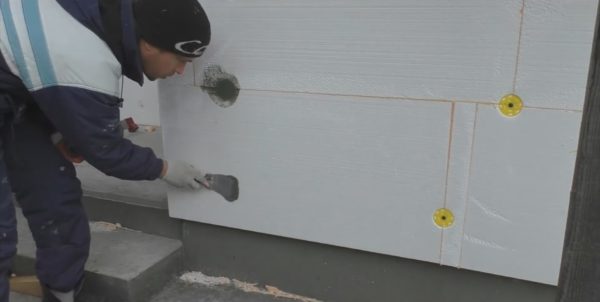
It is recommended to purchase polystyrene foam of different thicknesses two sheets with a thickness of 50 mm., And one 100 mm., As a rule, it is overlapped, as a result of which the joint of the first layer gets to the middle of the second layer.
Selecting information on how to insulate the wall in the apartment from the inside, if you live in a panel house, watch the video.
Insulating walls from the inside with foam, recommended instruction
In order to produce this type of work you will need a tool:
- for marking you will need a pencil and a ruler;
- when working, drills and a hammer drill are needed;
- the surface must be primed, brushes, a primer and a roller will not be superfluous;
- in order for the surface to be smooth, you will need sandpaper;
- need to purchase spatulas.
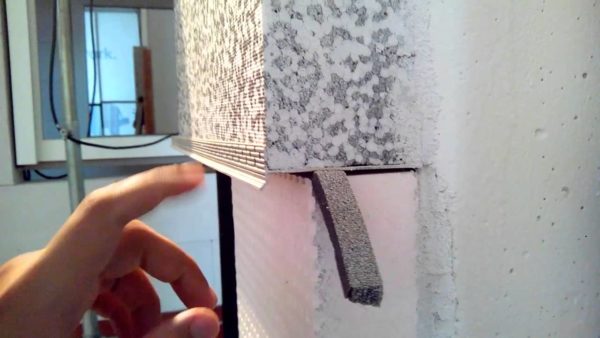
Materials:
- it is recommended to take glue, which is based on cement;
- the basis of the work will be the foam itself;
- to seal the joints you need a serpentine tape:
- polystyrene is attached to special dowels, called umbrellas;
- mesh made of polymer;
- it is best to purchase a universal primer.
Read more: Insulate the house with your own hands outside - selection of materials, standards and installation
Several stages of wall insulation with foam:
The most basic stage is called pre-training. It is quite important, because the quality of adhesion of the sheets to the wall directly depends on how much the quality of the substrate is met. At this stage, the insulating properties remain very important.
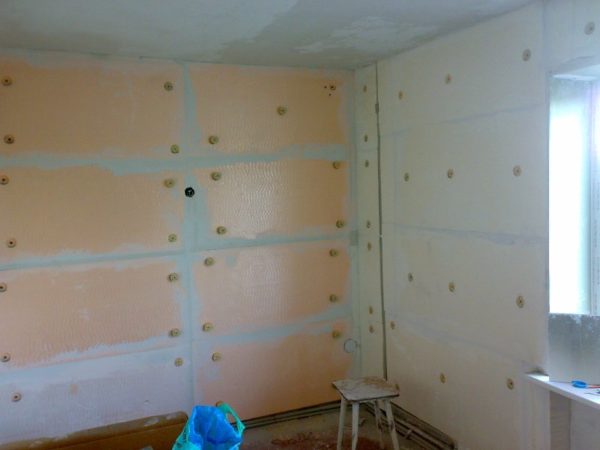
Before you begin, you must:
- all windows from which cold air enters are recommended to be replaced; if this is not done, all insulation work will be simply useless;
- while all the cracks must be closed;
- the wall must be cleaned of clogged nails and wallpaper;
- to fight against the fungus, everything that can be thoroughly washed, if all this does not lend itself to washing, it is necessary to clean the fungus with sandpaper;
- wall irregularities must be leveled, if this is not done, air remains between the sheets and a point shift occurs;
- the baseboard must be removed;
- only on the carrier coating does the material be dismantled and therefore it is necessary to trim the floor covering to the sheet thickness.
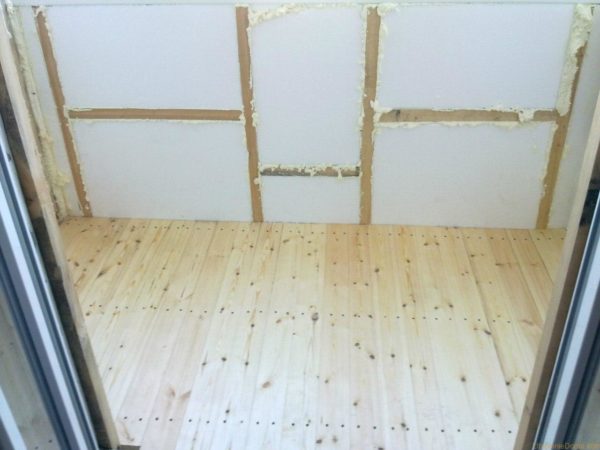
In order to eliminate minor defects, it is recommended to use putty, this helps to level the wall, in which transitions of more than 10 mm are seen.
Preparatory stage
It is necessary to perform the following actions on it: the prepared wall must be treated with a primer, it is recommended to use Сeresit СТ-17 for this. When applied, a thin film is formed, it is it that provides excellent adhesion of the wall to the adhesive mixture and at the same time it produces excellent bioprotection.
When applying a primer, it is not recommended to use a spray. Because with uneven drying, its properties are violated.
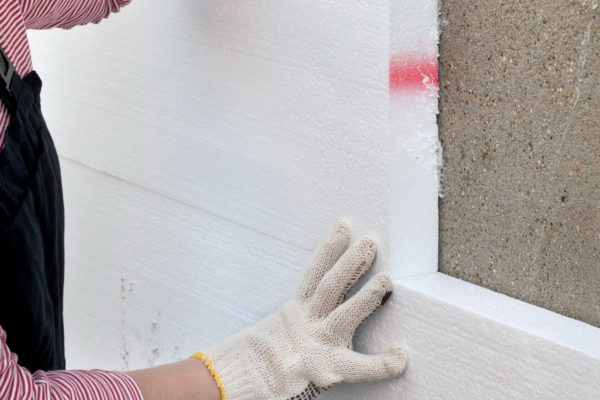
In the room it is necessary to create excellent air ventilation so that the wall is completely dry.
The walls, especially in old buildings, are uneven, so markup is necessary. It is necessary to draw a line that is located as close to the floor as possible, it is along it that you will be equal. Thanks to this, all the sheets will lie fairly evenly.
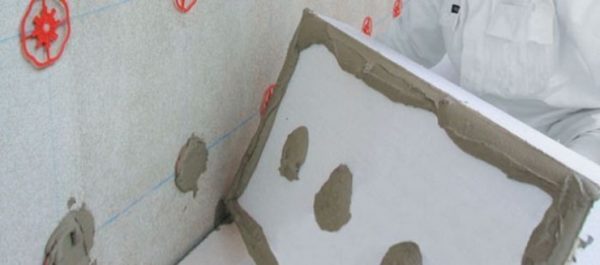
Gradually approached the main stage, with it, it is possible to insulate the wall with foam in the apartment of a panel house in two ways:
- The frame method is mainly used for further finishing with clapboard or drywall. If the thickness of the wall profiles is about 27 mm, foam must be laid between them. However, this thickness is very small to insulate the walls of the house. The method is perfect for lining, because it is under it that a wooden frame is being improved, which has a beam thickness of at least 50 mm.
- When filling the walls with putty, the frameless method is used.
Insulation of walls from the inside in a frameless way for plaster or putty
Work must begin from below from a remote angle:
- glue solution must be applied to the sheet;
- attach the sheet to the wall and be sure to the floor, to the drawn strip, if the sheet is uneven, gently press it, you do not need to press hard on the sheet, because it can be pressed;
- in the middle of the sheet, you need to drill a hole for the dowel umbrella and fix the sheet with it;
- the head of the umbrella should not go beyond the sheet, because it is difficult to finish.
- in order for the sheet to be well fixed, umbrellas must be hammered in its corners.
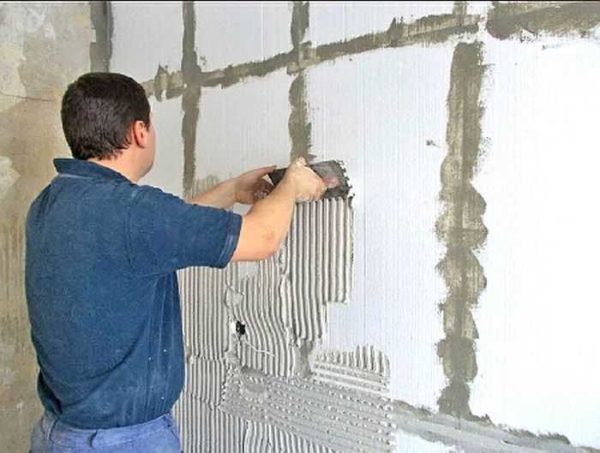
If the foam boards are even, it is possible to save on umbrellas, but at the same time the installation is “flimsy”
In order for the insulation of the walls from the inside to be quite high-quality, it is necessary to displace the sheets of the second row. In this case, there will be a complete absence of perpendicular joints.
To prevent heat loss, it is necessary to remove the cracks. The sheets must be sized to fit the top row, the foam can be cut with an ordinary knife or hacksaw if it is not thicker than 50 mm. The gap at the seams should not be thicker than 10 mm, it can be blown out with foam.
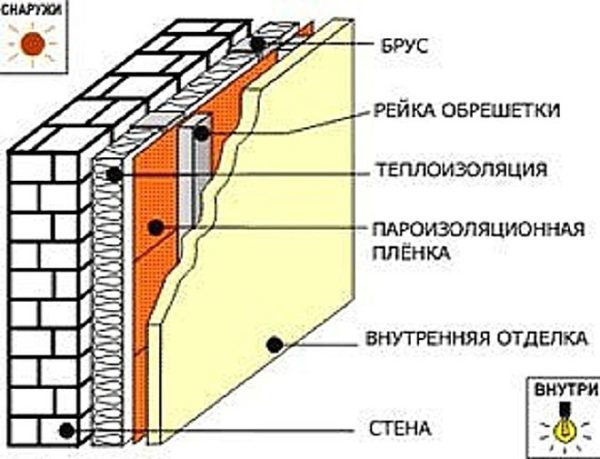
In order to prevent cracking along the seam, it is recommended to seal it with a serpentine tape. A special grater for polystyrene foam is recommended to eliminate protruding joints. Umbrella caps drowning in polystyrene must be coated with a special putty.
Finishing stage
Glue must be applied to the surface of the top sheet, its width should correspond to the reinforced mesh;
- it is necessary to attach a grid and hide it under a layer of the mixture;
- the wall must be allowed to dry and only then proceed with the finishing work.

The folds should be completely absent on the grid; in the future they dry very poorly.

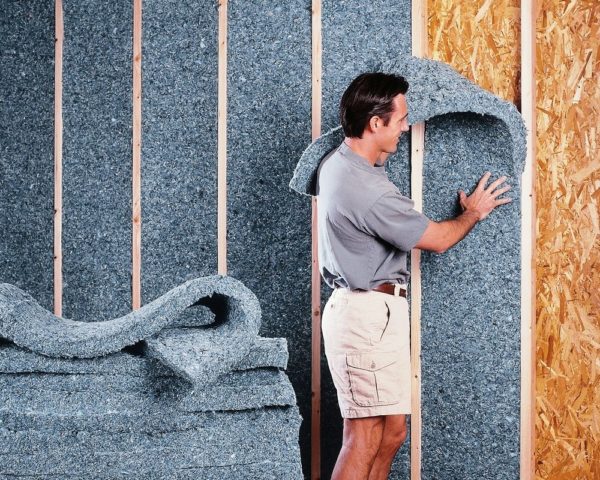



Alas, no comments yet. Be the first!